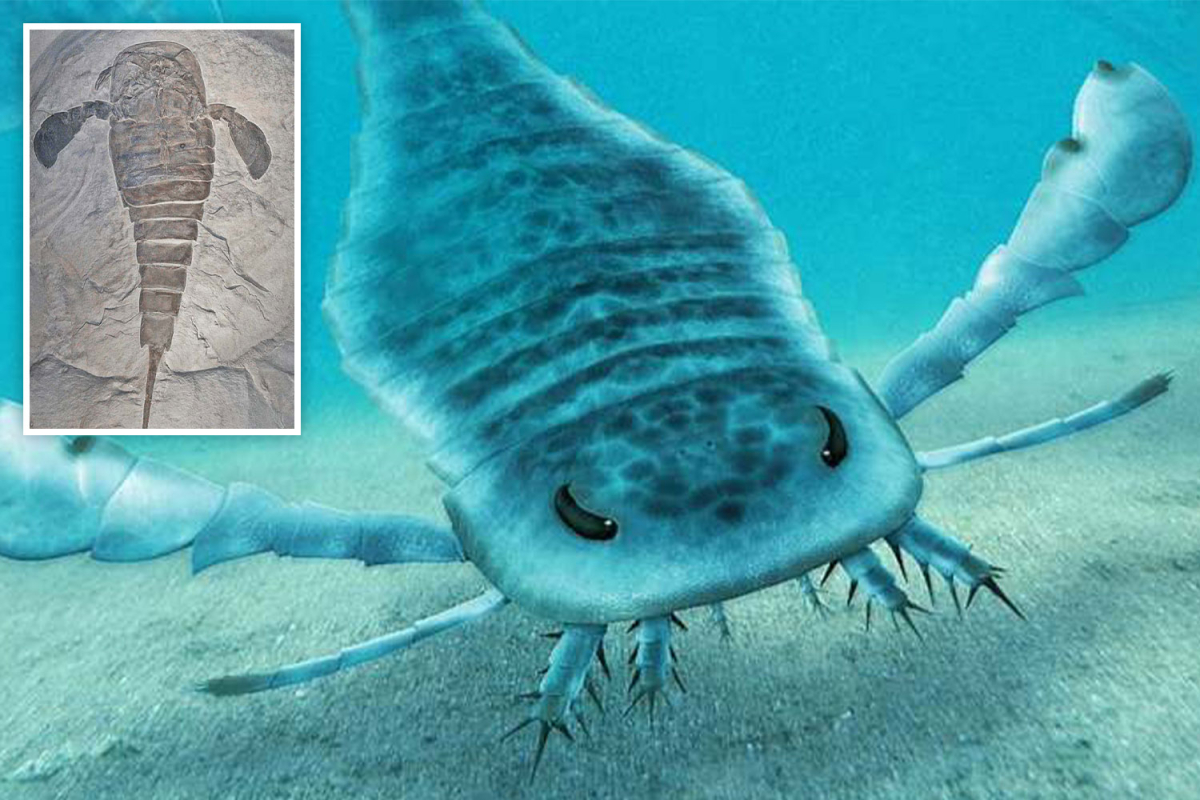
GIANT sea scorpions much larger than humans once roamed and hunted in ancient oceans.
The creepy creatures have been documented in a new study that’s attempting to fill in the patchy scientific record of Australian sea scorpions.

4

4
The large creatures date back to a period called the Paleozoic Era.
This was around 541 million and 252 million years ago, before dinosaurs had taken over the planet.
It was a time when arthropods, such as insects, crustaceans and scorpions, could reach extreme sizes.
Paleozoic arthropods were some of the largest animals on Earth at the time and would have been found in many oceans all over the world.

4

4
We know the sea scorpions looked like the scorpions we have today due to fossilised remains.
However, they are more like cousins to the modern scorpions we know.
They’re some of the largest marine predators ever observed in the fossil record.
This included the species Jaekelopterus rhenaniae, which was up to eight foot long.
Experts compare them to modern day great white sharks in terms of how high up the food chain they would have been.
Fossilied remains suggest they could have caught prey in their huge claws and crushed in with the teeth-like structures on their legs.
They were also thought to be quick swimmers.
Scientists think they ate fish and smaller arthropods but haven’t ruled out the giant scorpions would have feasted on a human if one had been around at the time.
Australia’s ancient sea scorpions were first documented on record in 1899 but there’s still a lot we don’t know about them.
The new study included sea scorpion fossils that hadn’t previously been noted.
It provides evidence of six different groups of the creatures that could have existed in Australia.
Future research hopes to find more complete specimens and document the ancient species better.
This study has been published in Gondwana Research.
A timeline of life on Earth
The history of the planet in years…
- 4.6billion years ago – the origin of Earth
- 3.8billion years ago – first life appears on Earth
- 2.1billion years ago – lifeforms made up of multiple cells evolve
- 1.5billion years ago – eukaryotes, which are cells that contain a nucleus inside of their membranes, emerge
- 550million years ago – first arthropods evolve
- 530million years ago – first fish appear
- 470million years ago – first land plants appear
- 380million years ago – forests emerge on Earth
- 370million years ago – first amphibians emerge from the water onto land
- 320million years ago – earliest reptiles evolve
- 230million years ago – dinosaurs evolve
- 200million years ago – mammals appear
- 150million years ago – earliest birds evolve
- 130million years ago – first flowering plants
- 100million years ago – earliest bees
- 55million years ago – hares and rabbits appear
- 30million years ago – first cats evolve
- 20million years ago – great apes evolve
- 7million years ago –first human ancestors appear
- 2million years ago – Homo erectus appears
- 300,000 years ago – Homo sapiens evolves
- 50,000 years ago – Eurasia and Oceania colonised
- 40,000 years ago – Neandethal extinction
In other news, locusts are plaguing East Africa as the country continues to battle the global pandemic.
Insects trapped in amber for 99million years have revealed stunning details about creatures from that time period.
And, fossilised footprints found in South Korea have been attributed to an ancient 13 foot crocodile that walked on two legs.
What do you think of this scorpion discovery? Let us know in the comments…
We pay for your stories! Do you have a story for The Sun Online Tech & Science team? Email us at [email protected]

Analyst. Amateur problem solver. Wannabe internet expert. Coffee geek. Tv guru. Award-winning communicator. Food nerd.










